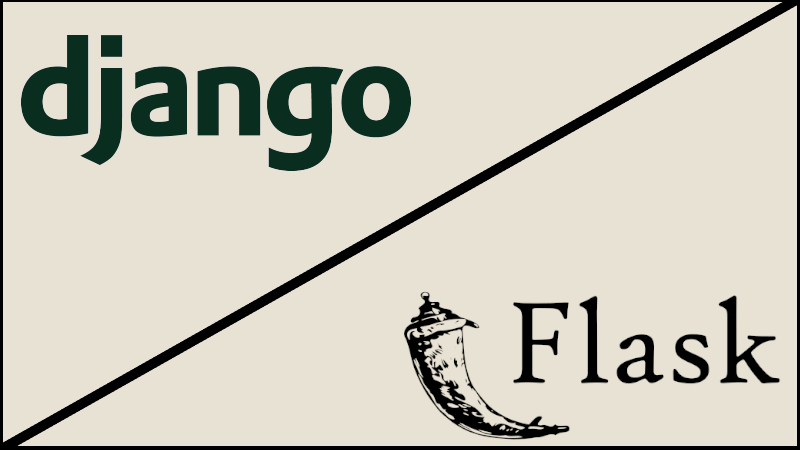Django is a web development framework in Python, that brings together all the functions you need to create a complete, scalable, and secure application. Find out everything you need to know!
In the early 2000s, web programmers Adrian Holovaty and Simon Willison were working for an online newspaper called The Lawrence Journal-World.
Their mission was to develop a content management system (CMS) for the website. They began work on the project using the PHP programming language but soon encountered performance and security problems.
As an alternative, they decided to create their own Python framework. In homage to jazz guitarist Django Reinhardt, the project was named Django.
What is Django?
Django was released as open source in 2005. This Python tool aims to facilitate the rapid development of complex web applications while following best development practices.
Its main function is to relieve programmers of the most tedious tasks so that they can focus on writing applications using code and design patterns common to web development.
As a high-level Python web framework, Django enables the rapid development of secure, easy-to-maintain websites.
It makes it easy to build efficient websites by adding functions to support cache and database operations.
The special feature of this framework is that it covers both front and back ends. It allows you to manage databases and back-end functions as a Python tool, but also to edit files and create HTML pages as a front-end tool.
Thanks to its active community, Django has improved over the years and is backed up by extensive, detailed documentation.
It is one of the most widely used web development frameworks in the world, including famous applications such as Instagram, YouTube, and Spotify.

How does it work?
Every Django project consists of four main files that form the heart of the application. First, URLs.py is a URL mapping file that redirects HTTP requests to the view file based on the request URL.
The View.py file is responsible for processing HTTP requests sent by application users. These are usually Python functions or classes returning an HTTP response.
After receiving data from the model file, it sends responses to the template file for rendering. Views are linked to the application’s URLs, enabling access to the various functionalities.
The Models.py file defines the structure and management of the application’s database. Data models are the cornerstone of any Django application.
The framework provides an ORM (Object-Relational Mapping) that enables developers to work with databases easily and efficiently, without the need to write SQL queries.
This gives developers the ability to create data models using Python classes, which are then mapped to database tables.
Finally, the Templates.html file defines the presentation of the application’s user interface. These templates are used to display data taken from the database and processed by the views. This powerful system makes it possible to create dynamic, interactive user interfaces.
Advantages and disadvantages
The main advantage of Django is that it’s a complete framework that brings together everything a developer needs to build an application.
For example, you can use a ready-to-use website skeleton, form templates for collecting data, a user authentication system, and various tools for serializing XML and JSON data.
All these functionalities work together according to consistent design principles.
Many of these principles are similar to those of the Python language, such as concise, readable syntax. Others are specific to Django, such as consistency, rapid code expansion, and DRY: Don’t Repeat Yourself.
The latter implies that each feature must be in only one place to avoid redundancy. These principles make Django easy to use.
What’s more, this framework helps developers avoid the most common security problems, such as embedding session information in cookies.
Django can be used to build applications of any size, and scaling is very easy.
Debugging, extension, and maintenance processes are simple and systematic since all applications follow the same design principles.
However, this tool also has a few weak points. It’s not ideal for the development of basic applications and simple web interfaces, such as a landing page that doesn’t require interaction with a database or file directory.
Other options may be more suitable, as this is a complex, high-level framework with many features. A smaller framework such as Flask is preferable.
Similarly, Django is not the best choice for an application that is already large and cannot exist within a single code base.
The framework itself is rather large and can lead to a slowdown in the final application. Even if it enables rapid scaling of an application, the process itself may result in a slower application.
Finally, it’s best to avoid Django if you want to build every part of your project from the ground up and learn the basics of web development. This is because a large part of the process is automated.

Why learn Django?
More comprehensive than Flask, Django is also harder to learn. However, anyone who has mastered Python and the basics of web development will quickly be able to handle this framework.
Learning to use this tool can open many doors in your programming career. It’s a widely used solution for web development in Python, itself one of the most popular programming languages.
Many world-famous companies use Django to develop their applications, including Instagram, Disqus, Knight Foundation, MacArthur Foundation, Mozilla, National Geographic, Open Knowledge Foundation, Pinterest, Spotify, and Open Stack.
Conclusion, Django: a simple web framework for Python programmers to master
Both simple and comprehensive, Django is used by many web developers to rapidly create feature-rich, extensible and secure applications.
Mastering this tool is essential in the modern web development. However, it is necessary to learn Python in order to use it to its full potential.
To discover this programming language, choose DataScientest. All our training courses include a module dedicated to Python and its main libraries, such as NumPy, Pandas, or SciPy.










